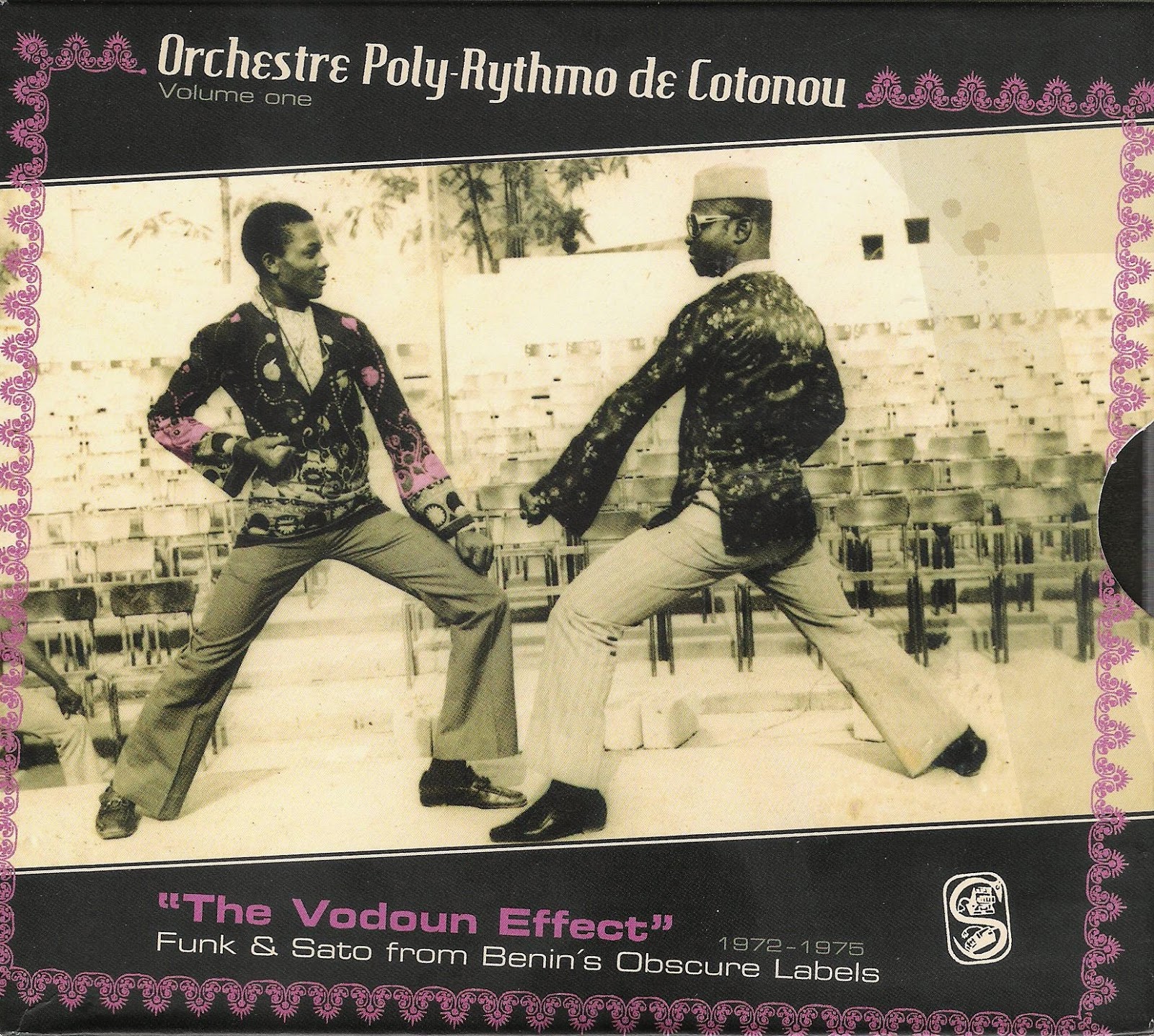Syncopation refers to the practice of inverting or otherwise shifting accents in an established rhythmic pattern. Polyrhythm, on the other hand, describes more than one rhythmic pattern occurring simultaneously. Though these elements frequently appear in tandem, especially in larger groups, I think their distinction from each other is worth pointing out.
Here’s some polyrhythm:

Orchestre Poly-Rythmo De Cotonou, “Sé Wé Non Nan,” The Vodoun Effect, 2009.
To my ear, the drums resolve in a 2/4 (two quarter notes to a measure) shuffle while the other instruments are played in 6/8 (six eighth notes to a measure). This polyrhythm yields syncopation for the ensemble’s total sound, though each rhythm sticks to its accent-pattern.
The resulting energy of the tune is sustained within the push-pull of the time signatures: the drums are steady but seem to push the other instruments, which in turn seem to drag the tempo. This is not the same thing as playing ahead of or behind the beat. It is, in fact, a difference of measure, which term should be read literally: it takes the horns longer to get back to the top of their phrase than it does the drums.
Once the vocals come in, however, the group coalesces into a collective 2/4, following the drums instead of the horns. The guitar, percussion, and organ, in the meantime, opt for a 4/4, bridging the gap between the drums and the other instruments.
If this is math, it is also rhythm. The fact that it can be quantified does not disqualify the energy and emotion it provides and amplifies. Rather, it confirms the energy and emotion, and one additional absolute truth: music does not exist outside of time.